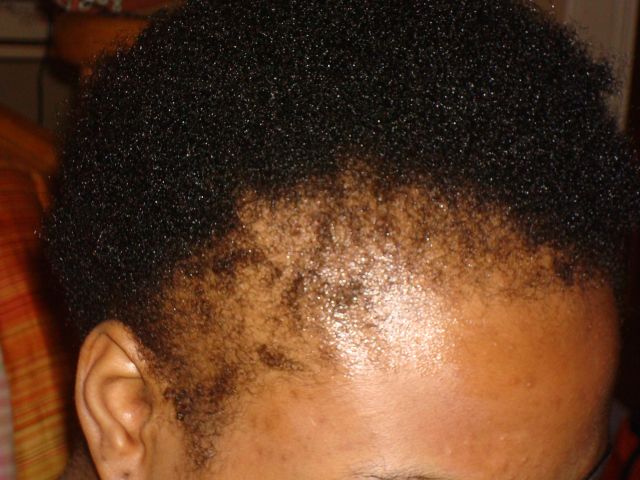Pattern Baldness and Other Hair Loss Causes
Pattern baldness develops as a weakness within the genetically inherited androgen receptors, which eventually leads to DHT sensitivity amid hairs on the scalp. DHT (dihydrotestosteron), the hormone metabolite of testosterone and the enzyme 5-alph-reductase, is the main culprit for the cause of this condition. However, new variables are now in question, such as the involvement of certain prostaglandins.
scarring or cicatricial caseus of hairloss can occur primarily such as in burns and accidents or be the end result of a non scarring typically inflammatory scalp condition. These hair loss causes that may lead to permanent baldness, and thus require Surgical Hair Restoration for Scarring Hair Loss Causes include:
- Lupus
- Chemotherapy (hair grows back in most cases, but occasionally does not)
- Terminal Traction alopecia
- Trichotillomania (a psychological disorder resulting in obsessive plucking of hair)
- An accident or burn or surgical mishap

Why Surgical Hair Restoration for Scarring Hair Loss Causes is a Solution
In cases of permanent damage, the loss of hair is irreversible. At the early onset of pattern baldness, the condition might be mitigated by the application of Rogaine or a Propecia prescription, but in its advanced stages the hair that is lost is gone forever. Likewise, in the event of Lupus-related hair loss, traction alopecia, trichotillomania, or an accident/burn, there is either a chemical barrier or the barrier of scar tissue preventing the hair from ever growing back naturally.
The idea behind surgical hair restoration is to take viable, DHT-immune hairs from a donor zone on the patient’s scalp (non-head donor sources are now an option) and implant them into the balding recipient areas. Here, the harvested donor hairs will take root and grow anew.
Surgical hair restoration can safely correct all listed hair loss causes, with minimal invasiveness and with natural-looking results. Follicular unit extraction is the leading method of hair transplant due to its ability to treat severe cases, its freedom to design the hairline more effectively, and its minimized resultant scarring.
http://www.jprasurg.com/article/S1748-6815%2812%2900230-6/abstract

